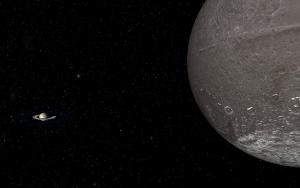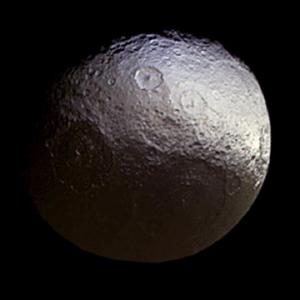Blog
Yin Yang Moon
26 May 2015
 NASA/JPL-Caltech
NASA/JPL-CaltechIapetus is a moon of Saturn known for two distinctive features. One is that it has a two-tone coloration, where roughly half of the moon is a dark, reddish-brown color while the other half is white and almost as bright as Jupiter’s moon Europa. It’s not entirely clear what gives Iapetus is yin yang coloring, but the most popular view is that it is cause by sublimation of the moon’s warmer side. Ice evaporates away leaving the dark remnant material. We know, for example, that the dark layer is no more than a foot thick, and has a bright layer underneath it.
 NASA/JPL-Caltech
NASA/JPL-CaltechAnother strange feature is the moon’s large equatorial ridge. It’s about 1,300 km long, and 13 km high. We know that the ridge is old because it is heavily cratered. Again, we aren’t entirely sure how such a ridge could have formed, but generally fall into two camps. One is that it was produced by some type of internal mechanism such as a convective overturn in its youth, the other is that is was caused an external mechanism such as the accumulation of debris from an ancient ring system. A recent paper in Icarus gives support to the accumulation model.1
In this work the team made a detailed model of the ridge system based upon observations from the Cassini probe. They then measured the shapes of the mountain peaks in the ridge, and found that they were within the angle of repose. That is, the angle at which accumulated matter tends to form a peak. Any steeper and the material will tend to collapse to a shallower peak. A geologic upheaval would likely produce a wide range of peak angles, so this suggests the ridge was produced by accumulation. Accumulation from a collapsed ring system would explain why the ridge lies along the equator.
Garcia, Erika J. Lopez, et al. “Topographic constraints on the origin of the equatorial ridge on Iapetus.” Icarus 237 (2014): 419-421. ↩︎